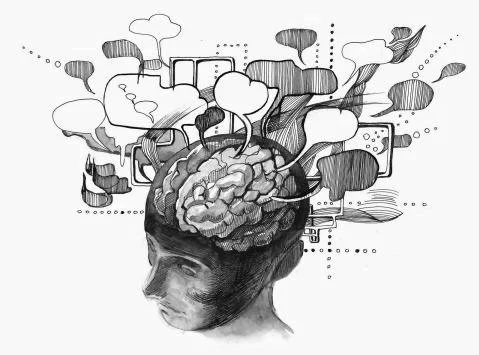why “Just Right” Isn’t just for goldilocks
Key points:
This is the blog version of my video What Goldilocks & Your Nervous System Have in Common. If you’re more of a tl;dr kind of person, you may prefer the video.
Our nervous system has an ideal climate; a Goldilocks zone, where it functions best, where it thrives. This zone is called the Window of Tolerance.
Inside our Window of Tolerance, things are “just right”. Our body tends feels relatively at ease, centred, grounded. Emotionally, we might feel calm, content, engaged. Mentally, we can focus and concentrate and think clearly.
Outside our Window of Tolerance… not so much.
Chronic stress, trauma and various elements of life in our modern world can cause our Window of Tolerance to narrow, leaving us to pendulum between states of hyper and hypoarousal. We may be easily overwhelmed, enraged, irritable, anxious or panicked, or find ourselves shut down, numb, cut off and depressed. Or both.
Understanding our Window of Tolerance, and even starting to map out our patterned responses is an important exercise, because it gives us so much information into what needs to happen next in order for us to thrive.
The Conversation
Today’s topic came out of a conversation with a client who was in a bit of a crisis, and I thought it was really important to help her understand what was going on inside, with her nervous system, amidst everything she was dealing with on the outside.
Which brought us to mapping the nervous system and the Window of Tolerance.
If you were in my office, we would sit down and draw this out together, because having a visual is really helpful, but since you’re not, you’re going to have to use your imagination (or watch the video).
The Window of Tolerance
Just like everything else biological, our nervous system has an ideal climate; a Goldilocks zone, where it functions best, where it thrives. This zone is called the Window of Tolerance.
Inside our Window of Tolerance, things are “just right”. Our body tends feels relatively at ease, centred, grounded. Emotionally, we might feel calm, content, engaged. Mentally, we can focus and concentrate and think clearly.
Inside our Window of Tolerance, our system is primed to engage and connect with the world and with others in a flexible and adaptive way.That’s because when we’re inside the Window of Tolerance all the areas of our brain are online and working optimally. If you remember Dan Siegal’s Hand Model of the brain, this is where all of our processing centres (our frontal cortex, our limbic system and our brain stem) are functional and operational. We are able to easily process and integrate information, allowing us to respond to situations adaptively. Inside the Window of Tolerance, we can achieve flow, be creative, and engage in strategic thinking and problem solving.
If inside the Window of Tolerance is “just right,” above the Window of Tolerance, it’s “too hot” - we’re feeling too much. Our body may feel restless, tense and on alert or on edge. Emotionally, we might feel overwhelmed, panicked, enraged. Mentally, our minds may race, we may be easily distracted or have trouble focusing.
Which all makes sense, because this is where we’re supposed to be if we’re facing a physical threat. Hyperarousal primes our system to mobilize, to protect itself, usually through fight, flight or freeze response. If there’s a lion or a bear, if there’s a threat to our physical safety, then our body should be tensing and on edge, it’s preparing to fight or flee. Our minds shouldn’t be focusing, they’re supposed to be scanning, scanning, scanning, looking for threats and exit strategies.
When we’re in hyperarousal, parts of our brain, particularly our frontal cortex, start to go offline. Our frontal cortex starts to take a back seat and we’re really driven by the deep brain, which are guided by our survival instincts like fight or flight.
So, we have “just right” and “too hot” and then below the Window of Tolerance, it’s “too cold” - we’re feeling too little. The body may feel heavy or numb or drained. Emotionally, we may feel flat or depressed or hopeless. Mentally, our minds may seem sluggish, we may struggle to think clearly, or we may be bored and spaced out.
Hypoarousal primes our system to immobilize, to protect ourselves by shutting down, withdrawing and disconnecting.
Which again, makes sense in some ways, because this is where we’re supposed to be if the lion has got us around the throat. If our system perceives that the situation is hopeless or that there’s no way out, it floods us with neuro-chemicals and natural pain killers that shut things down.
And again in hypoarousal, our frontal cortex starts to go offline and we’re once again operating primarily from those deep centres of our brain.
The Window of Tolerance & the Real World
So, in a perfect world, in a natural world, the world our systems were built for, we would live 99% of our lives inside the Window of Tolerance and we’d be in hyper or hypoarousal for the 3 minutes before we escape dying. Or don’t.
Unfortunately, many of us find ourselves in hyper and hypoarousal much more frequently… so why is that?
Primarily, it’s because we don’t live in the natural world. And when our survival mechanisms that were built for life on the Savanna, where threats were sporadic and fleeting, are being triggered in the modern world, where threats are frequent and chronic, it’s a recipe for maladaptive responses.
Chronically being triggered into hyper or hypo arousal (aka, chronic stress) teaches our nervous system that the world is not safe. And so the nervous system adapts by narrowing the Window of Tolerance. Which is actually really smart, because if I live in an unsafe world, then having a narrow Window of Tolerance, being easily activated into hyperarousal and ready to mobilize a moments notice, is the best way to survive.
So our modern world can result in this narrowing of the Window of Tolerance, and even worse, if our nervous system is learning that the world is unsafe (either through trauma or chronic stress), then being in the Window of Tolerance may not actually feel safe because the nervous system has learned that this is where we’re vulnerable. So our nervous system may not only narrow our Window of Tolerance, but it may actually start to actively avoid being in the Window of Tolerance, in order to keep us ready and mobilized.
We see this a lot with people who really struggle to be calm, to come down and relax, people who always need to be busy, to be going, going, going. It’s often a symptom of their nervous system trying to keep them mobilized.
So both of those things - the narrowing of our Window of Tolerance and active avoidance of being inside the Window of Tolerance - can lead us to penduluming between states of hyper and hypoarousal. We may be easily overwhelmed and survival mode takes over, leaving us take over, leaving us feeling enraged, irritable, anxious or panicked.
If left unresolved, this hyperarousal often plummets into hypoarousal - we burn out. Hyperarousal is very energy intensive, it burns a lot of fuel, and when that runs out, we tank. When we are hypoaroused, the system is essentially tuning out the chaos, leaving us feeling numb, cut off and depressed.
The Window of Tolerance & Therapy
So why is all this important?
Well, it’s important for several reasons;
It’s probably not a surprise that, if we want to thrive, we want a wide, resilient Window of Tolerance, and we want to hang out inside it for the majority of our time. So, when it comes to therapy, it’s often a key player. If someone has a narrowed Window of Tolerance, we want to use therapies that regulate the nervous system and expand the WOT, and we want strategies to bring ourselves back in the Window of Tolerance if we’ve been triggered out of it.
The Window of Tolerance should be an important guide in therapy. Good therapy is going to happen at the upper and lower limits of our Window of Tolerance. If we’re completely inside the Window of Tolerance, we’re probably not working on what we need to be. On the other hand, if therapy triggers you into hyper or hypoarousal, it’s not therapeutic. Remember, parts of your brain aren’t working when you’re outside of the Window of Tolerance, so they’re not learning anything. If you have a hangover after therapy, if you find yourself hyper or hypoaroused during or afterwards, it’s not therapeutic.
There’s a bit of a PSA in there, because, I am rarely ever the first therapist my clients are coming to. Most of the time, clients come to me because they’ve tried other therapies and haven’t gotten where they’ve wanted to. I can usually attribute this to two things, one of which is the therapy was not guided by the Window of Tolerance. Therapy that allowed them to be completely within the Window of Tolerance, and didn’t promote growth, or more frequently and more detrimentally, therapy that triggered them into hyper or hypoarousal.
So, for both of those reasons, understanding our Window of Tolerance, and even starting to map out our Window of Tolerance, to figure out how often we’re inside our Window of Tolerance or in hyper or hypoarousal, is such an important exercise, because it gives us so much information into what needs to happen next.
If you want more information, you may also like this post on Shorts: The Window of Tolerance, which focuses on the Window of Tolerance and mental capacity.







